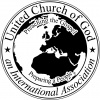Popular, But Wrong, Ideas About Angels
Downloads
Popular, But Wrong, Ideas About Angels

For instance, there is no mention of wings in most appearances of angels in Scripture, while they do occur in some visions—though not with just two. There are other common misconceptions too.
Halos of light
A typical feature of angel costumes in children’s Bible plays is a glittery halo—representing a supposed ring of light over the head denoting holiness. This recalls a lot of medieval art, where saintly Bible characters are depicted with a halo or glowing golden disk over or behind the head. In fact, this image—also known as a nimbus, aureole, glory or gloriole—has been used in the sacred art of many religions.
We find it among the Greeks and Romans. The rayed crown of the sun god Helios was depicted in the Colossus of Rhodes (and later copied for the Statue of Liberty). It was used in images of Hellenistic and Roman rulers. This may have been associated with the Zoroastrian divine luster that marked Persian kings. The halo also occurs in ancient Hindu and Buddhist art.
And it goes back much further. “Sumerian religious literature frequently speaks of . . . a ‘brilliant, visible glamour which is exuded by gods, heroes, sometimes by kings, and also by temples of great holiness and by gods’ symbols and emblems’” (Wikipedia, “Halo (religious iconography)”). Indeed, we see it prominently as the solar disc of Ra, the Egyptian sun god.
As the editors of The Encyclopaedia Britannica point out: “Because of its pagan origin, the form was avoided in Early Christian art, but a simple circular nimbus was adopted by Christian emperors for their official portraits. From the middle of the 4th century, Christ was also shown with this imperial attribute . . . In the 5th century it was sometimes given to angels, but it was not until the 6th century that the halo became customary for the Virgin Mary and other saints . . . The halo was used regularly in representations of Christ, the angels, and the saints throughout the Middle Ages” (Britannica.com/art/halo-art). While Christ and the angels do have glorious radiance—with brilliant, shining faces—this does not correspond to the halo and its origins as a pagan sun symbol.
Sitting on clouds
The idea of angels lolling about on clouds—and that people will do the same after they die—probably comes from a combination of archaic imagination and misapplied scriptural mentions of clouds in association with heaven. Satan in his rebellion said of his assault on heaven, “I will ascend above the heights of the clouds, I will be like the Most High” (Isaiah 14:14). Yet this was not ascending into some “Jack and the Beanstalk” kingdom of giants on the clouds, but rising out of the earth’s atmosphere and traveling beyond outer space into another dimension.
We also see prophecies in Scripture of Christ coming with or on “the clouds of heaven” (Daniel 7:13; Matthew 24:30; Matthew 26:64)—or “coming in a cloud with power and great glory” (Luke 21:27). Consider that He also came to the ancient Israelites in a cloud with power and glory—in the pillar of cloud and fire that led them and that descended on the physical tabernacle.
When Jesus ascended to heaven after His resurrection “a cloud received Him out of [the disciples’] sight”—and angels said He would return in the same manner (Acts 1:9-11).
In most of these passages the reference is to the earth’s atmosphere, where there are physical clouds. And even physical clouds can be spectacular. You’ve no doubt seen clouds of the sky beautifully illuminated by the sun as a grand display of the majesty of the Creator. In any case, the picture of angels sitting on actual clouds is more cartoonish than scriptural.
Idly strumming on harps
Another popular conception has angels idly strumming on harps while floating about or sitting on the clouds. Yet we don’t see this in Scripture either. It’s true that some angels do have harps, while others have other instruments. Indeed, God enjoys music, and at least some angels were given great musical abilities, as is true of some people.
Notice what God said to the angel who rebelled and became Satan: “The workmanship of your timbrels and pipes was prepared for you on the day you were created” (Ezekiel 28:13). The apostle John in Revelation 5:8 refers to the 24 angelic elders “each having a harp”—presumably used in performance and praise before God. John later in Revelation 14:2 hears “the sound of harpists playing their harps.”
It seems there are choirs and orchestras of angels in regular praise at the throne of God. John later sees a vision of people joining in the music, “having harps of God” (Revelation 15:2). As the physical tabernacle and temple of God were intended as a model of the heavenly temple (see Hebrews 9:23-24), it seems quite likely that the Levitical choirs and musicians of the physical service were meant to model the ongoing heavenly praise directed toward God.
Don’t be misled by popular—but wrong—ideas. Learn what the Bible reveals about God’s powerful angels!
